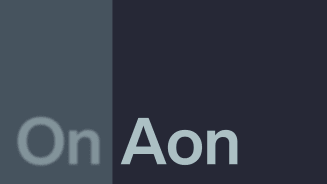Navigating Uncertainty: Strategic Actions for 401(k) Sponsors

Faced with operational challenges, regulatory changes, and fiduciary risks, some employers are turning to a newer approach to 401(k) plans.
Key Takeaways
-
SECURE 2.0 provisions present significant challenges. While a top priority for 42% of sponsors, about 1 in 4 are still unsure of key optional provisions.
-
Rising fiduciary risks and evolving workforce expectations present new opportunities for 401(k) sponsors.
-
Strategic solutions like PEPs can offer a lower-risk path for sponsors to better meet the evolving sentiments and needs of participants while reducing costs.
Introduction
Today’s 401(k) plan sponsors face a perfect storm of complexity: operational and regulatory challenges, escalating fiduciary risk, and a workforce with rising expectations for financial support. Compounding this are bouts of economic and market volatility that make long-term planning, such as providing an appropriate mix of investment options, a moving target. In such an environment, merely staying compliant is no longer enough. To thrive, sponsors must rethink how they manage risk, simplify plan oversight, and deliver real value to employees.
Navigating an Evolving Legislative Landscape
Staying current with retirement plan legislation has always been a challenge but the scope and speed of change are pushing many plan sponsors to their limits. SECURE 2.0 remains a top concern: 42% of sponsors call it a priority, yet a quarter remain unclear on many of its 90-plus provisions like Roth catch-up contributions and “super catch-up” rules. Missteps, such as the 2024 IRS administrative error for catch-up contributions, underscore the fragility of compliance efforts.
Beyond what’s already law, sponsors know they should brace for further regulatory shifts. New mandates, revised tax incentives, and evolving fiduciary standards could fundamentally reshape the already demanding work of staying compliant, not to mention contribution strategies and plan design.
SECURE 2.0 provisions also unfold as they “stage” year over year. All told this evolving legislative landscape creates a conundrum for sponsors working on their own. As Eric Neumann, Sr. Director of Compensation, Benefits & HRIS at APTIM, aptly states: “We're good at what we do, but nobody on my team is an absolute 401(k) expert, so there's always the worry of did we miss something because we don't know what we don't know.”
42%
While SECURE 2.0 remains a top priority for 42% of sponsors, about 1 in 4 are still unsure on key optional provisions.
The Asymmetric Legal Liability Facing Sponsors
Unlike other corporate risks, fiduciary liability is personal and expansive. Aon’s Fiduciary Liability Study found that inadequate fee benchmarking, poor documentation, and lack of OCIO support are major red flags from the point of view of insurance providers. That’s due in part to those same factors being the targets of litigation. Lawsuits, which are increasingly routine with cases often seeking tens of millions in damages, highlight the disproportionate risks sponsors shoulder.
A cottage industry popped up to target employer plans, enlist employees and bring suits. Plaintiffs firms have notched many wins via signed settlements since 2020. The Employees enlisted in litigation often see little return, $25 per employee on the high end of settlements. Legal fees run into the millions for many of these suits. Meanwhile, plan sponsors can face reputational damage and financial exposure. “The fear of making an honest mistake kept me up at night,” says Neumann. The liability equation is lopsided—and untenable for many organizations.
Rising Employee Demand for Financial Wellbeing Support
Plan sponsors, meanwhile, want to spend more time meeting the needs of employees who want more than a retirement plan. Instead, they want more holistic financial wellbeing support. Aon’s Employee Sentiment Study found that 45% of U.S. workers want help saving for retirement, while 37% seek financial education.
Employers are responding to this sentiment. Forty percent of sponsors already prioritize broader wellbeing, with one-third planning to expand offerings within two years. One area of increasing focus is personalized financial guidance, which is especially applicable for today’s multigenerational workforces, where one-size-fits-all plans often miss the mark.
Strategy vs. Operational Demands: The Sponsor Dilemma
While enhancing benefits is strategically important, sponsor time, staff, and budget are constrained by the fiduciary demands described earlier. The dilemma helps explain a persistent support gap. Financial stress affects 80% of employees and contributes to absenteeism and disengagement. Yet only 28% of employers offer comprehensive financial wellness programs. The data also tells us that benefits influence retention: 58% of employees would leave for better benefits, while 43% stay because of them.
A strong retirement plan isn’t just a compliance requirement—it’s a competitive advantage. But supporting it shouldn’t come at the expense of broader business goals.
45%
Aon's Employee Sentiment Study found that 45% of U.S. workers want help saving for retirement.
Rebalancing the Model: Pooled Employer Plans as a Strategic Solution
Pooled Employer Plans (PEPs) are changing the retirement landscape. By consolidating plan management under a professional Pooled Plan Provider (PPP), sponsors can offload the heavy burden of fiduciary responsibilities, simplify administration, and reduce costs.
The lift for internal teams is substantial: audit hours are reduced, vendor management is centralized, and compliance is outsourced. “We’ve saved dozens of hours on audits,” says APTIM’s Eric Neumann.
11.4%
Aon PEP participants have seen participation rates increase by 11.4% and deferral rates by 5.2%.
We’ve saved dozens of hours on audits.
They can instead focus their energy on adapting plan design to the needs of their people and communicating their offerings. Aon PEP participants have seen participation rates increase by 11.4% and deferral rates by 5.2%.
Why Now: The Case for Considering a PEP
No longer niche, PEPs are gaining widespread market adoption. One in five plans is either participating in or exploring a PEP. Fiduciary insurers now prefer larger, reputable PEP providers, which means participating sponsors may see more favorable insurance terms.
And sponsors maintain flexibility. Within a PEP, they still control key aspects like match design and eligibility rules while reducing oversight burdens.

Product / Service
Pooled Employer Plans
Less Risk, More Focus, Better Outcomes
Now is the time for plan sponsors to rethink their retirement strategy. As Ahnaf Bashir of Advance Financial suggests: “Ask yourselves and your leadership, are you better off being a fiduciary yourself—or better off letting someone else do it for you?”
Ask yourselves and your leadership, are you better off being a fiduciary yourself—or better off letting someone else do it for you?
With fiduciary risks rising, and workforce expectations evolving, the ROI of the current structure deserves scrutiny. Sponsors should assess whether PEPs offer a more effective, lower-risk path that opens up the possibility to better meet the evolving sentiments and needs of employees.
Reimagining plan oversight means doing it smarter rather than doing more. The right retirement structure, and PEPs in particular, can relieve administrative strain, reduce exposure, and deliver stronger outcomes for employees.
General Disclaimer
This document is not intended to address any specific situation or to provide legal, regulatory, financial, or other advice. While care has been taken in the production of this document, Aon does not warrant, represent or guarantee the accuracy, adequacy, completeness or fitness for any purpose of the document or any part of it and can accept no liability for any loss incurred in any way by any person who may rely on it. Any recipient shall be responsible for the use to which it puts this document. This document has been compiled using information available to us up to its date of publication and is subject to any qualifications made in the document.
Terms of Use
The contents herein may not be reproduced, reused, reprinted or redistributed without the expressed written consent of Aon, unless otherwise authorized by Aon. To use information contained herein, please write to our team.
Aon's Better Being Podcast
Our Better Being podcast series, hosted by Aon Chief Wellbeing Officer Rachel Fellowes, explores wellbeing strategies and resilience. This season we cover human sustainability, kindness in the workplace, how to measure wellbeing, managing grief and more.
Aon Insights Series Asia
Expert Views on Today's Risk Capital and Human Capital Issues
Aon Insights Series Pacific
Expert Views on Today's Risk Capital and Human Capital Issues
Aon Insights Series UK
Expert Views on Today's Risk Capital and Human Capital Issues
Client Trends 2025
Better Decisions Across Interconnected Risk and People Issues.
Construction and Infrastructure
The construction industry is under pressure from interconnected risks and notable macroeconomic developments. Learn how your organization can benefit from construction insurance and risk management.
Cyber Labs
Stay in the loop on today's most pressing cyber security matters.
Cyber Resilience
Our Cyber Resilience collection gives you access to Aon’s latest insights on the evolving landscape of cyber threats and risk mitigation measures. Reach out to our experts to discuss how to make the right decisions to strengthen your organization’s cyber resilience.
Employee Wellbeing
Our Employee Wellbeing collection gives you access to the latest insights from Aon's human capital team. You can also reach out to the team at any time for assistance with your employee wellbeing needs.
Environmental, Social and Governance Insights
Explore Aon's latest environmental social and governance (ESG) insights.
Q4 2023 Global Insurance Market Insights
Our Global Insurance Market Insights highlight insurance market trends across pricing, capacity, underwriting, limits, deductibles and coverages.
Global Risk Management Survey
Better Decisions Across Interconnected Risk and People Issues.
Regional Results
How do the top risks on business leaders’ minds differ by region and how can these risks be mitigated? Explore the regional results to learn more.
Top 10 Global Risks
Trade, technology, weather and workforce stability are the central forces in today’s risk landscape.
Industry Insights
These industry-specific articles explore the top risks, their underlying drivers and the actions leaders are taking to build resilience.
Human Capital Analytics
Our Human Capital Analytics collection gives you access to the latest insights from Aon's human capital team. Contact us to learn how Aon’s analytics capabilities helps organizations make better workforce decisions.
Human Capital Quarterly Insights Briefs
Read our collection of human capital articles that explore in depth hot topics for HR and risk professionals, including using data and analytics to measure total rewards programs, how HR and finance can better partner and the impact AI will have on the workforce.
Insights for HR
Explore our hand-picked insights for human resources professionals.
Workforce
Our Workforce Collection provides access to the latest insights from Aon’s Human Capital team on topics ranging from health and benefits, retirement and talent practices. You can reach out to our team at any time to learn how we can help address emerging workforce challenges.
Mergers and Acquisitions
Our Mergers and Acquisitions (M&A) collection gives you access to the latest insights from Aon's thought leaders to help dealmakers make better decisions. Explore our latest insights and reach out to the team at any time for assistance with transaction challenges and opportunities.
Natural Resources and Energy Transition
The challenges in adopting renewable energy are changing with technological advancements, increasing market competition and numerous financial support mechanisms. Learn how your organization can benefit from our renewables solutions.
Navigating Volatility
How do businesses navigate their way through new forms of volatility and make decisions that protect and grow their organizations?
Parametric Insurance
Our Parametric Insurance Collection provides ways your organization can benefit from this simple, straightforward and fast-paying risk transfer solution. Reach out to learn how we can help you make better decisions to manage your catastrophe exposures and near-term volatility.
Pay Transparency and Equity
Our Pay Transparency and Equity collection gives you access to the latest insights from Aon's human capital team on topics ranging from pay equity to diversity, equity and inclusion. Contact us to learn how we can help your organization address these issues.
Property Risk Management
Forecasters are predicting an extremely active 2024 Atlantic hurricane season. Take measures to build resilience to mitigate risk for hurricane-prone properties.
Technology
Our Technology Collection provides access to the latest insights from Aon's thought leaders on navigating the evolving risks and opportunities of technology. Reach out to the team to learn how we can help you use technology to make better decisions for the future.
Trade
Our Trade Collection gives you access to the latest insights from Aon's thought leaders on navigating the evolving risks and opportunities for international business. Reach out to our team to understand how to make better decisions around macro trends and why they matter to businesses.
Transaction Solutions Global Claims Study
Better Decisions Across Interconnected Risk and People Issues.
Weather
With a changing climate, organizations in all sectors will need to protect their people and physical assets, reduce their carbon footprint, and invest in new solutions to thrive. Our Weather Collection provides you with critical insights to be prepared.
Workforce Resilience
Our Workforce Resilience collection gives you access to the latest insights from Aon's Human Capital team. You can reach out to the team at any time for questions about how we can assess gaps and help build a more resilience workforce.
More Like This
-

Article 11 mins
The Digital Claims Transformation: What Risk Leaders Need to Know
As digital claims transformation accelerates, organizations are adopting AI, automation and analytics to improve speed, transparency and accuracy — and unlock deeper insights into risk profiles, enhancing long-term resilience.
-

Article 14 mins
Nordic Insurance Market Insights - 2026 Outlook
The insurance market is softening across the Nordics; a trend expected to continue across most lines throughout 2026. A key reason for the widespread rate reductions is an abundance of capacity, with the region proving to be an attractive destination for international insurance providers.
-

Article 9 mins
From Volatility to Value: Multi-Year Casualty Insurance and Structured Risk Solutions
In today’s volatile casualty market, businesses face mounting uncertainty from rising loss exposures and shifting risk transfer dynamics. Multi-year structured programs and other alternative risk transfer solutions can offer a smarter way to align risk duration with capital strategies.
















































































































































































